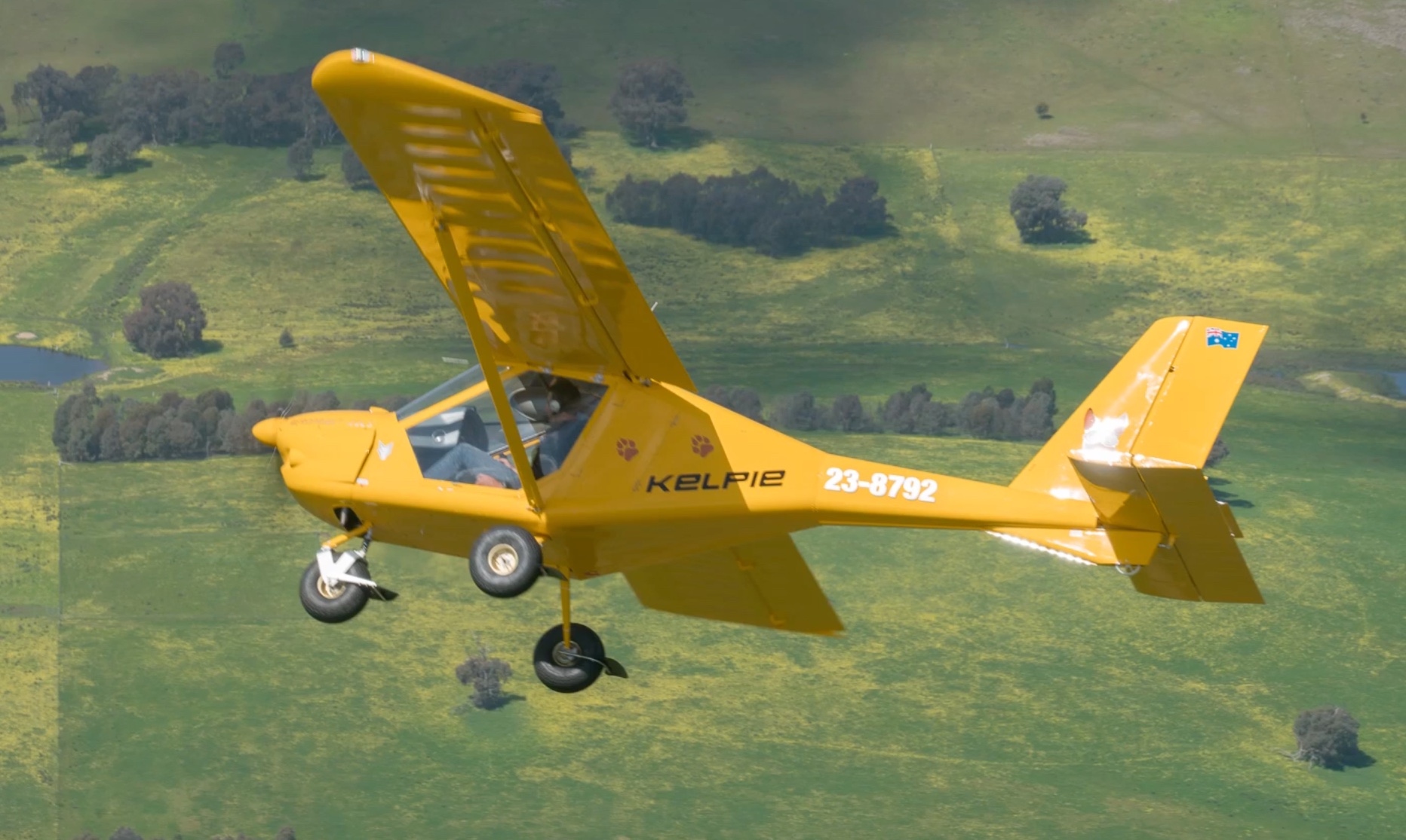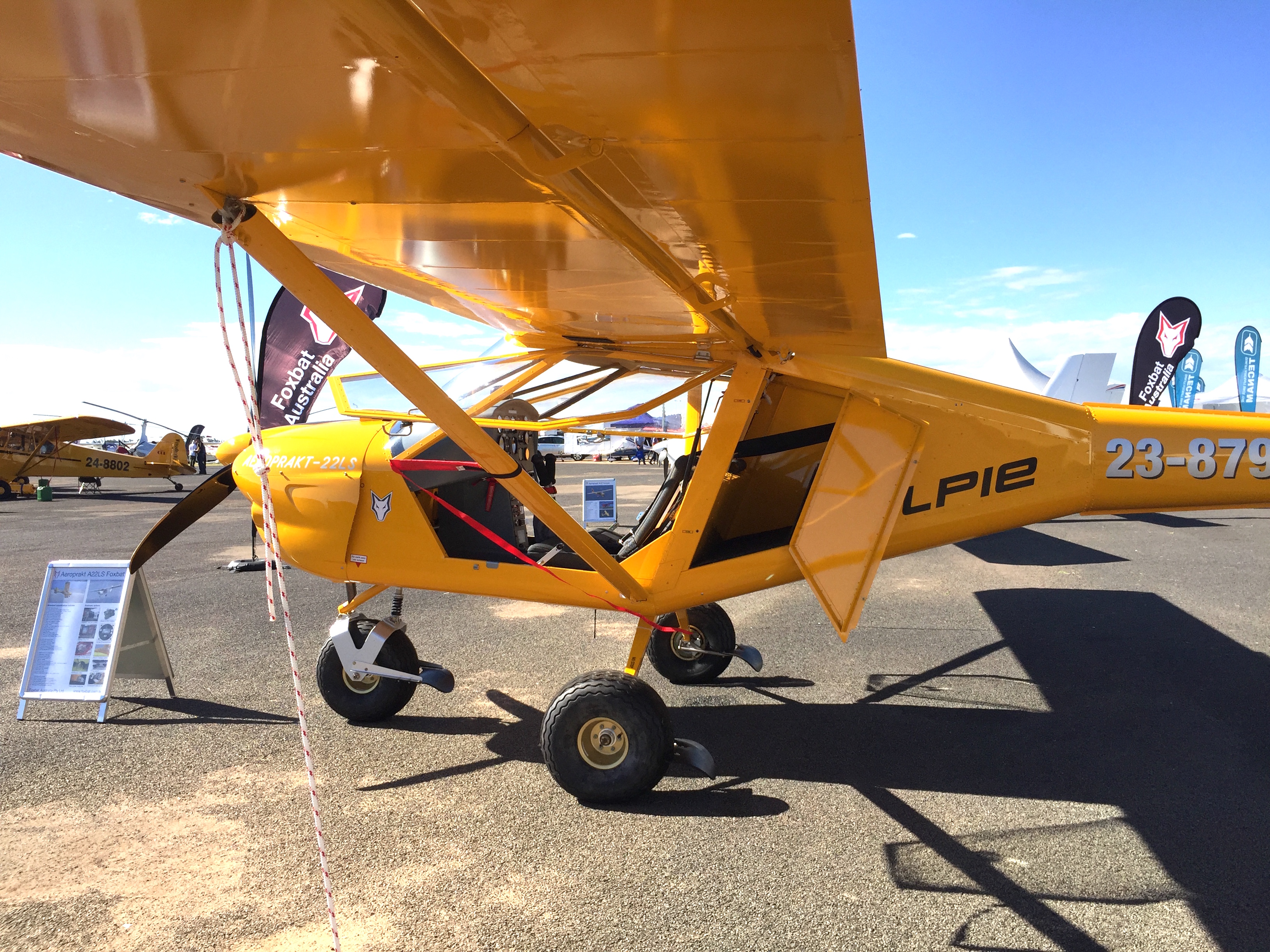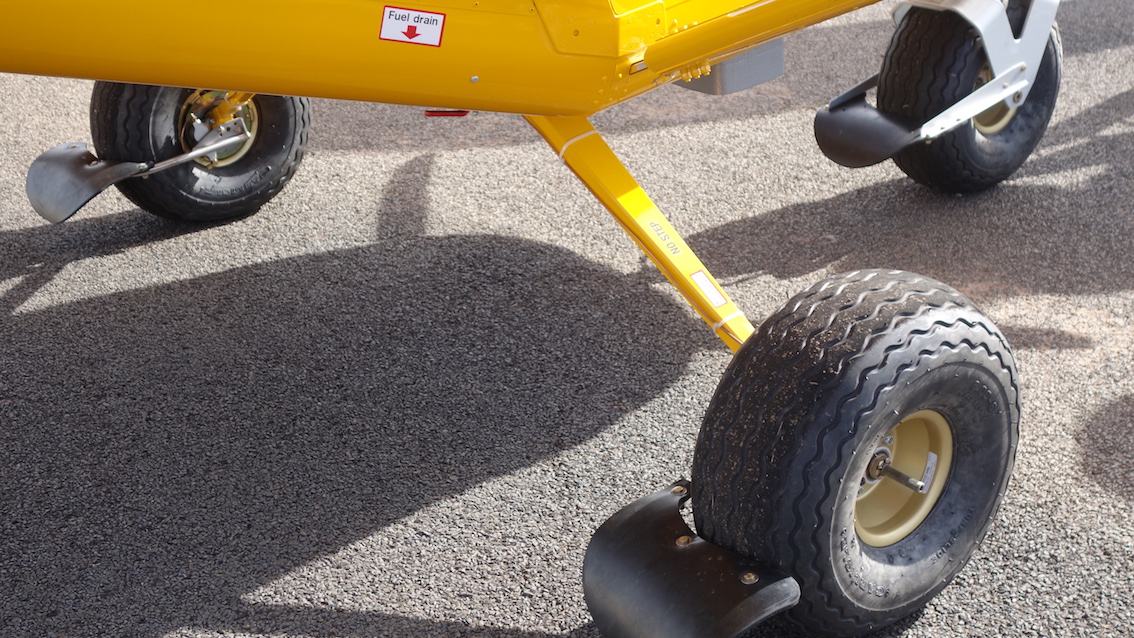For 2020 we are introducing some updates to the A22LS Foxbat/Kelpie and A32 Vixxen aircraft available in Australia while keeping prices at the same levels as for 2019.
 First among these is a new windscreen design, using moulded 3mm acrylic instead of the flex-to-shape 2mm flat polycarbonate sheet. The acrylic windscreen is more rigid than the original design, which has served us well for over 20 years. The main benefit is noise reduction in the cabin, particularly noticeable in the A32 Vixxen, which is already a relatively quiet aircraft. There are a couple of minor downsides – the acrylic screen needs special jigs both for original installation and when a replacement screen is fitted; it’s also more expensive than the original, flat sheet design. All new A22LS Foxbats/Kelpies and A32 Vixxens built for Australia after 01 January 2020 will be fitted as standard with the new type of screen.
First among these is a new windscreen design, using moulded 3mm acrylic instead of the flex-to-shape 2mm flat polycarbonate sheet. The acrylic windscreen is more rigid than the original design, which has served us well for over 20 years. The main benefit is noise reduction in the cabin, particularly noticeable in the A32 Vixxen, which is already a relatively quiet aircraft. There are a couple of minor downsides – the acrylic screen needs special jigs both for original installation and when a replacement screen is fitted; it’s also more expensive than the original, flat sheet design. All new A22LS Foxbats/Kelpies and A32 Vixxens built for Australia after 01 January 2020 will be fitted as standard with the new type of screen.
Although replacement polycarbonate screens will continue to be available, a retro-fit acrylic screen kit will also be available for owners wishing (optionally) to replace their existing polycarbonate screen, should it become damaged. For a returnable deposit, Foxbat Australia will be able to loan your qualified engineer a set of jigs to enable the replacement. We are also making a short video to cover installation of the new screen.
 Next, the A22LS Foxbat will now have as standard the so-called ‘Kelpie’ metal luggage bay with side door. We have sold 20 of the Kelpie variant since we introduced it around 2 years ago and in addition, most Foxbat buyers have opted for the Kelpie bay over the previously ‘standard’ canvas luggage container. The main reason for this is probably that the metal luggage bay is rated at 30 kgs maximum as opposed to the canvas container at 20 kgs. The contents of the container remain accessible in flight and a hard cover is included if in-flight access is not required. There is a small basic weight penalty but as the A22LS is already one of the lightest (and strongest) LSAs on the Australian market, you will still be able to carry over 200 kgs of people and bags, even after filling full with fuel.
Next, the A22LS Foxbat will now have as standard the so-called ‘Kelpie’ metal luggage bay with side door. We have sold 20 of the Kelpie variant since we introduced it around 2 years ago and in addition, most Foxbat buyers have opted for the Kelpie bay over the previously ‘standard’ canvas luggage container. The main reason for this is probably that the metal luggage bay is rated at 30 kgs maximum as opposed to the canvas container at 20 kgs. The contents of the container remain accessible in flight and a hard cover is included if in-flight access is not required. There is a small basic weight penalty but as the A22LS is already one of the lightest (and strongest) LSAs on the Australian market, you will still be able to carry over 200 kgs of people and bags, even after filling full with fuel.
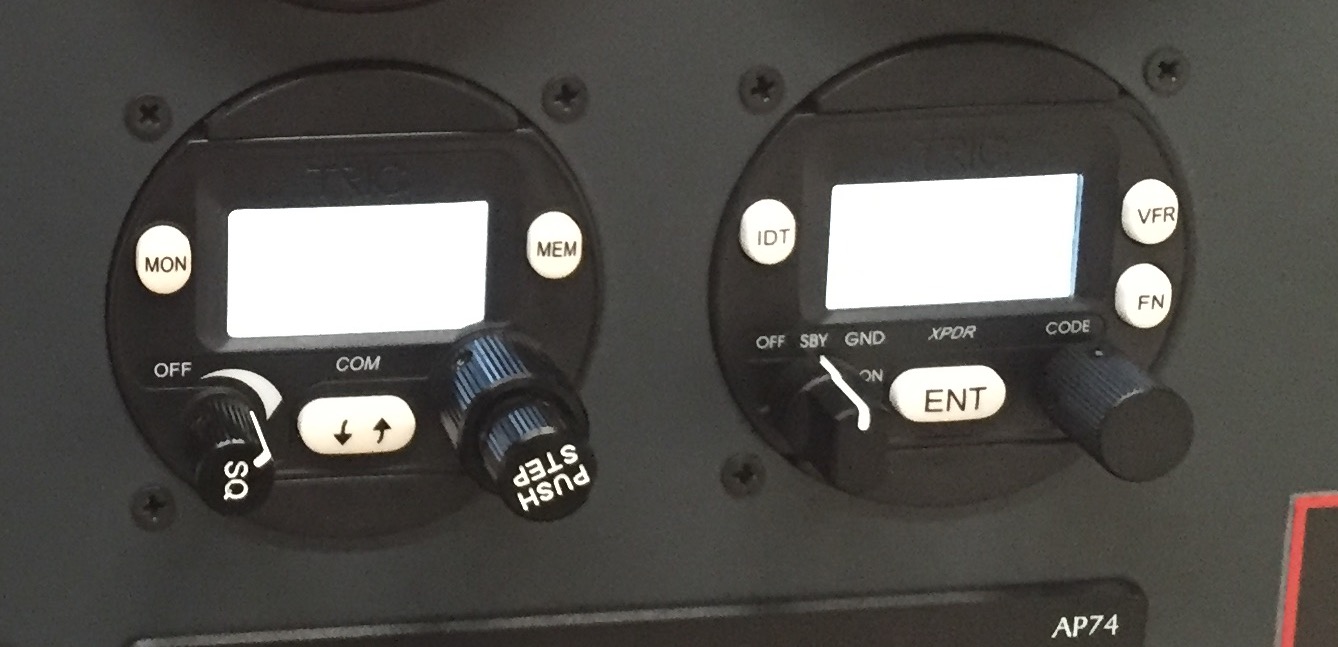 We have offered a variety of VHF radios over the years, including the popular German Filser/Funkwerk OLED radio. However, after extensive experience with TRIG – a UK (well, Scotland actually) manufacturer – we have decided to include the TRIG TY91 VHF radio as standard on all A22LS and A32 aircraft in Australia. Where optionally requested, the TRIG TT21 mode S transponder will visually match the TY91 radio. Dynon SkyView equipped aircraft will continue with the Dynon VHF radio.
We have offered a variety of VHF radios over the years, including the popular German Filser/Funkwerk OLED radio. However, after extensive experience with TRIG – a UK (well, Scotland actually) manufacturer – we have decided to include the TRIG TY91 VHF radio as standard on all A22LS and A32 aircraft in Australia. Where optionally requested, the TRIG TT21 mode S transponder will visually match the TY91 radio. Dynon SkyView equipped aircraft will continue with the Dynon VHF radio.
 For 2020, all A22LS Foxbats with the Y-stick control configuration will now standardise on the ‘long leg’ raised instrument panel. This panel has curved cut-outs along the bottom edges on pilot and co-pilot side, facilitating comfort for those owners with longer than average legs.
For 2020, all A22LS Foxbats with the Y-stick control configuration will now standardise on the ‘long leg’ raised instrument panel. This panel has curved cut-outs along the bottom edges on pilot and co-pilot side, facilitating comfort for those owners with longer than average legs.
The ‘long-leg’ option isn’t available with twin-yoke configuration controls as the yokes support structure occupies some of the space taken by the cut-outs in the panel bottom. Also, for the A22LS Kelpie, the UHF radio is normally fitted under the panel on the co-pilot side. If you require the long-leg cut out on a Kelpie, there will be a small additional charge to cover installation of a remote head for the UHF radio. The A32 already has legroom equivalent to the A22LS ‘long-leg’ panel.
We are working with the factory to offer a number of additional options on A22LS and A32 aircraft. Among these are a visor-style tinted sun screen in the top of the windscreen, larger capacity fuel tanks for the A32 and a glider tow-hook for the A32. We are also hoping for a supplement to allow doors off flying in the A32 to match that of the A22LS.
As an aside, although we are sometimes asked by customers if they can fit bigger tyres to the A32, it is unlikely these will be formally approved by the factory any time soon. From experience with flying school owners who have removed the wheel spats and leg fairings, we are aware that this can reduce the cruise speed by as much as 9-10 knots, effectively pulling the straight and level cruise of the A32 down towards to that of the A22LS. The A32 is fitted standard with aviation grade AirTrac 15×6.00×6 tyres and landowner experience has shown that these are more than sufficient for use on paddock and gravel strips with the spats remaining in place.
SPECIAL OFFER – for a limited number of aircraft we will include a Garmin Aera 660 GPS with a panel mount of your choice at no extra cost. First come, first served!
For more information on any of these items, please see our website at www.foxbat.com.au or call Ido Segev on 0431 454 676 or Peter Harlow on 0413 900 892.

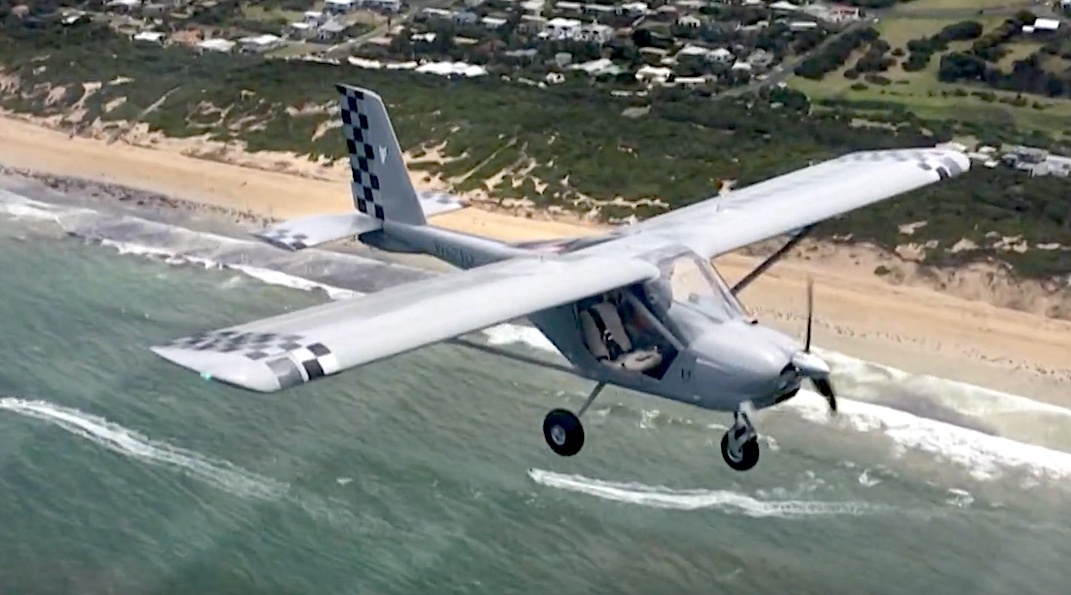

 When the factory announced the 600kgs gross weight A22LS (Light Sport) version, I wanted to differentiate it from the original lighter weight A22L aircraft. From a distance of a few metres, the A22L and A22LS look pretty much identical, and the signature yellow paint continued, so one obvious way was to change the logo. After discussions with a local designer, I decided to drop the red star and the ‘Foxbat’ script and use only the fox head symbol. In fact, this was subliminally sharpened up to make it look more aggressive and, in a distant gesture to the red star, I changed the colours to red and black.
When the factory announced the 600kgs gross weight A22LS (Light Sport) version, I wanted to differentiate it from the original lighter weight A22L aircraft. From a distance of a few metres, the A22L and A22LS look pretty much identical, and the signature yellow paint continued, so one obvious way was to change the logo. After discussions with a local designer, I decided to drop the red star and the ‘Foxbat’ script and use only the fox head symbol. In fact, this was subliminally sharpened up to make it look more aggressive and, in a distant gesture to the red star, I changed the colours to red and black.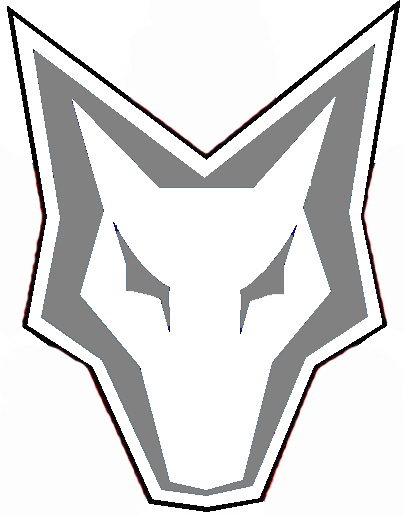 This new ‘red’ logo was applied to the first few A22LS aircraft – until someone ordered a red one, and the red fox head on the tail just didn’t look right! At the same time, I experienced a couple of misunderstandings about the colour of the registration numbers/letters on the fuselage sides. These are required to be of sufficient contrast to make them easily distinguishable, so I had been using black letters or numerals. All OK on yellow & white aeroplanes but almost invisible on red and blue ones. The designer came to the rescue and we agreed on silver letters and numerals, with a black shadow – which made them easy to see on all aircraft colours. To co-ordinate with the registration colours, I changed the fox head logo on the aircraft to black, white and silver.
This new ‘red’ logo was applied to the first few A22LS aircraft – until someone ordered a red one, and the red fox head on the tail just didn’t look right! At the same time, I experienced a couple of misunderstandings about the colour of the registration numbers/letters on the fuselage sides. These are required to be of sufficient contrast to make them easily distinguishable, so I had been using black letters or numerals. All OK on yellow & white aeroplanes but almost invisible on red and blue ones. The designer came to the rescue and we agreed on silver letters and numerals, with a black shadow – which made them easy to see on all aircraft colours. To co-ordinate with the registration colours, I changed the fox head logo on the aircraft to black, white and silver.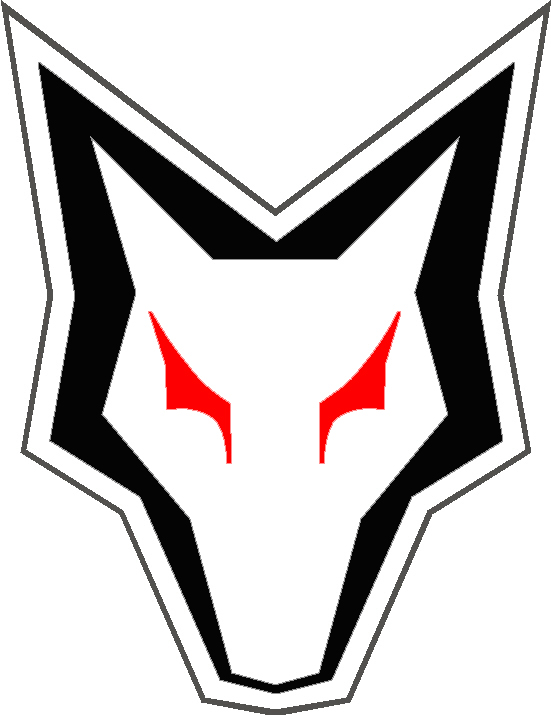 In mid-2015 the factory announced the new, fast cruising A32. Many people were happy for this to still be called a Foxbat but, clearly, this was quite a different aeroplane – both to look at and to fly. After much agonising, I finally decided to go with’ Vixxen’ – again, more aggressive, with the extra ‘x’ added to make it a bit more memorable. And so the logo received yet another make over, hopefully to align it with the name. The silver elements were changed for black and the eyes were changed to red, for some eye-candy appeal.
In mid-2015 the factory announced the new, fast cruising A32. Many people were happy for this to still be called a Foxbat but, clearly, this was quite a different aeroplane – both to look at and to fly. After much agonising, I finally decided to go with’ Vixxen’ – again, more aggressive, with the extra ‘x’ added to make it a bit more memorable. And so the logo received yet another make over, hopefully to align it with the name. The silver elements were changed for black and the eyes were changed to red, for some eye-candy appeal. Finally, about 18 months ago, the factory agreed to our suggestions to build an aircraft aimed at appealing to Australia outback landowners and pilots. We added a heavy-duty metal luggage bay with a side door, fat tyres with mud guards, a siren, a UHF radio and a bigger climb prop as well as a couple of other additions. But what to call this aircraft? We decided to be a bit more adventurous than ‘Foxbat Farmer’ and the like. In the end, our sales and service support partners – Cleveland Bay Aviation in Townsville – came up with ‘Kelpie’. This name has a bit more going for it than ‘Dingo’ or ‘Wombat’, suggesting hard work and ruggedness, developed for Australian conditions. And so the latest in a line of logos was born – a bit whimsical but a a bit of fun too. Maybe it’s a combination of the original fox head and a touch of Scooby Doo, ‘well friendly’ as my grandson would say.
Finally, about 18 months ago, the factory agreed to our suggestions to build an aircraft aimed at appealing to Australia outback landowners and pilots. We added a heavy-duty metal luggage bay with a side door, fat tyres with mud guards, a siren, a UHF radio and a bigger climb prop as well as a couple of other additions. But what to call this aircraft? We decided to be a bit more adventurous than ‘Foxbat Farmer’ and the like. In the end, our sales and service support partners – Cleveland Bay Aviation in Townsville – came up with ‘Kelpie’. This name has a bit more going for it than ‘Dingo’ or ‘Wombat’, suggesting hard work and ruggedness, developed for Australian conditions. And so the latest in a line of logos was born – a bit whimsical but a a bit of fun too. Maybe it’s a combination of the original fox head and a touch of Scooby Doo, ‘well friendly’ as my grandson would say. Following the recent Australian launch of the
Following the recent Australian launch of the 